Director Frank Capra explored the theme of the innate goodness of the young at heart, as personified by James Stewart, overcoming the evil schemes of black-hearted older men once before in 1939’s Mr. Smith Goes To Washington, a scathing attack on corruption and misuse of power as demonstrated by the Taylor machine; a combination of local government, private industry and the mass media to manipulate public opinion and steam-roll the political affiliations of crooked magnate ‘Boss’ Jim Taylor.
Both Capra and Stewart served in World War II and their first film together in peacetime would be 1946’s It’s A Wonderful Life which takes the ideals of Mr. Smith and blends them with elements of Charles Dickens’ A Christmas Carol to examine the life of George Bailey, a man who sacrifices his personal ambitions for travel and adventure for the better of those around him in the sleepy town of Bedford Falls which he yearns to escape.
The film also recapitulates the homespun wisdom and family values offered in Capra’s first star vehicle for James Stewart, 1938’s You Can’t Take It With You in which he plays Tony Kirby the idealist son of wealthy and snobbish parents who disapprove of him dating the daughter of the highly eccentric neighbouring Sycamore family who don’t share the Kirby’s respect for money.
All three films are great but Capra and Stewart’s collaboration reaches maturity with It’s A Wonderful Life and structurally, on balance, it is the better film. In fact the movie’s plotting is what makes it so remarkable, a less ambitious director would have started at the scene where George Bailey reaches the end of his tether on Christmas Eve and contemplates suicide, as he is convinced his life insurance policy makes him of more value to his family dead than alive, and then flash back to reveal his past. Instead we arrive at this point a good hour into the film after we have observed the course of George’s life from a young age courtesy of Clarence Oddbody’s orientation as his Guardian Angel; if Clarence’s mission to save George is successful it will earn him his wings.
This episodic plot device allows us to become very familiar with the folks who live in Bedford Falls and discover how the Bailey family Building and Loan Association founded by George’s father, allowed so many of them to afford their own homes and escape the clutches of the merciless landlord Mr. Potter who owns the slums in which so many of them are forced to rent at extortionate prices. George has always hoped to leave the small town and pursue a life of adventure but we see how at potentially life changing moments he puts his own aspirations aside for the sake of his family and when his father dies circumstances see to it that he stays once more to take over the day to day running of the Building and Loan firm.
George marries his childhood sweetheart Mary and in a key scene they manage to avoid a mass panic after a run on the Bedford Falls bank leaves the Building and Loan in danger of collapse, they calm the local investors by issuing them all with bailouts from their $2,000 honeymoon fund; they settle in the town and raise a family and when he’s unfit for duty in WWII George accepts his fate and he and the Building and Loan prosper. Until one Christmas Eve, while George is dealing with a company audit, his forgetful Uncle Billy mislays $8,000 on route to deposit it at the bank and the money ends up in the hands of Henry Potter who grasps at the chance to fatally wound the Building and Loan and rid himself of the troublesome Bailey clan altogether.
George is at his wits end when he is unable to trace the missing funds and fears prosecution, shame and scandal and decides his only option is end it all by jumping off a bridge when Clarence the Angel materialises and jumps first before George gets the chance. This is where the film’s ingenious plotting comes to fruition, inspired by the spirit of a Dickensian Christmas this twist allows George to go back to Bedford Falls and see what things would have been like had he never lived. All the selfless good deeds that George did growing up are all undone and the town is a much worse place for it. James Stewart’s raw emotional performance is totally authentic, unlike his naive Jefferson Smith’s clumsy but heartfelt filibustering, we have shared George Bailey’s life experiences and we know his sacrifices and disappointments and it makes his breakdown all the more believable, we can all empathise with this character and share in his realisation in begging to live again.
George runs home to Mary and the children and is greeted by all of the townspeople who he has helped and who have prospered by the Building and Loan over the years and between them they more than cover the $8,000 deficit and as the Christmas morning bells chime Clarence the Guardian Angel finally gets his wings. It’s A Wonderful Life has never looked more wonderful than on Blu-ray, the film which had suffered from some very ropey home video releases in the past, finally has a majestic 1080p transfer and a crackle free, albeit mono, digital soundtrack. There are no extras unfortunately and the only additional inclusion is the colourised version of the film, a practice I do not approve of and whilst it has been done very tastefully it only detracts from the power of the original black and white photography.
Frank Capra is too easily dismissed as a sentimental filmmaker, earning the derisive term Capracorn which was often attributed to his pictures by unfavourable critics. However, his movies are rich, technically brilliant, cleverly scripted and superbly acted, usually by a repertory company including James Stewart, Gary Cooper, Jean Arthur, Lionel Barrymore and Edward Arnold. I sincerely hope that It’s A Wonderful Life will not be the only Capra Blu-ray released as both You Can’t Take It With You and Mr. Smith Goes To Washington ought to be preserved for future generations to enjoy.


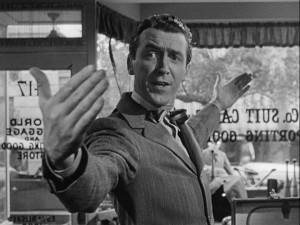
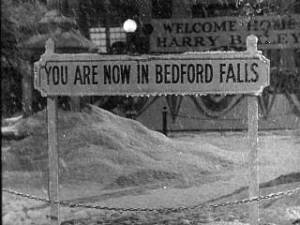
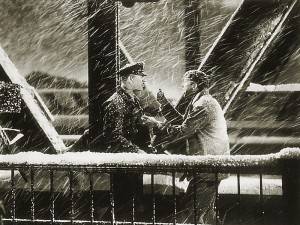
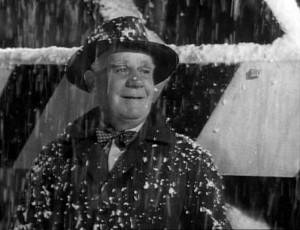
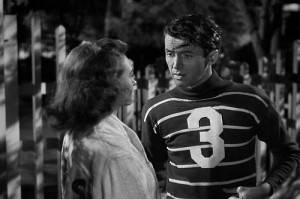
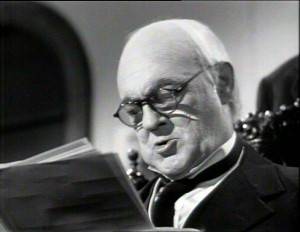
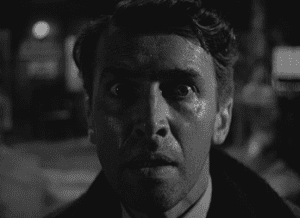
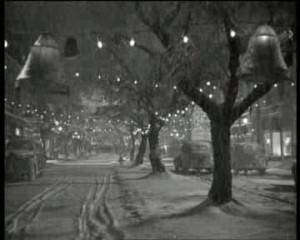
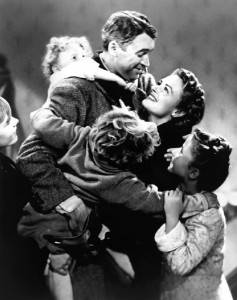

2 thoughts on “It’s A Wonderful Life”
Oooh, you’re such an inspiration. I love this blog!
…Excellent read – educative and entertaining.
…I have, in my own writing, criticised films and their makers for being overly sentimental but I’ve never had a problem with sentimentality in itself. Richard Curtis gets criticised for over doing it but I think that’s the way he is, something I’ve come to accept and enjoy about his work. Capra might be a sentimentalist at heart but there’s nothing wrong with that as he doesn’t overly sugar coat things. It’s A Wonderful Life is one of the most endearing and heartwarming films ever made…if more films were like this I’d say lay on the sentimentality as much as you want!
Comments are closed.